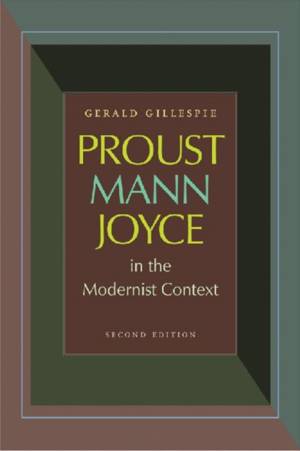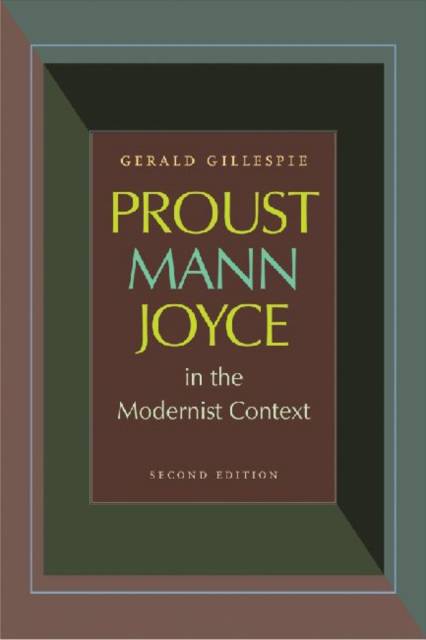
- Retrait gratuit dans votre magasin Club
- 7.000.000 titres dans notre catalogue
- Payer en toute sécurité
- Toujours un magasin près de chez vous
- Retrait gratuit dans votre magasin Club
- 7.000.0000 titres dans notre catalogue
- Payer en toute sécurité
- Toujours un magasin près de chez vous
Description
Marcel Proust, Thomas Mann, and James Joyce grew into adulthood during the advent of modernism. They still command our interest as witnesses of an age that brought both the excitement of constant innovation in the arts and technology and, with the eruption of World War I, the challenge of the greatest prolonged crisis for Western civilization since the French Revolution. The original version of Proust, Mann, Joyce in the Modernist Context strove to show how a kindred encyclopedic drive and sacramental sense informed their responses to the epochal trauma, yielding three distinct and monumental visions of the human estate by the 1920s.
In this second edition, several chapters have been augmented and a new chapter added to encompass important features of modernist prose fiction reaching into and beyond World War II. These enhancements allow greater attention to the late works of Mann and Joyce, contributions of the New World authors, and the special relationship of film to literature. Some 300 writers, artists, and thinkers are referenced to illuminate the creative variety of the larger contexts in which such novelists as Gide, Kafka, Woolf, and Beckett have a prominent place.
ABOUT THE AUTHOR:
Gerald Gillespie is professor emeritus at Stanford University and past president of the International Comparative Literature Association. Among his recent publications is By Way of Comparison: Reflections on the Theory and Practice of Comparative Literature.
PRAISE FOR THE FIRST EDITION:
"Gerald Gillespie's long and productive scholarly career evidences itself in the encyclopedic scope of this insightful analysis of literary history. . . ." -- Choice, Selected as an Outstanding Academic Title
"A substantial critical study, one of the most widely balanced accounts of modernism we have had in some time." -- Yearbook of Comparative and General Literature
"Gillespie belongs to an endangered scholarly species: that of the real comparatists. . . ." -- Comparative Literature
"A masterful study offering a new and uplifting view of the modern, while providing a comparative vision of the work of three great modern authors that transcends the accepted borders of modern understanding."--James Joyce Quarterly
Spécifications
Parties prenantes
- Auteur(s) :
- Editeur:
Contenu
- Nombre de pages :
- 375
- Langue:
- Anglais
Caractéristiques
- EAN:
- 9780813217888
- Date de parution :
- 27-09-10
- Format:
- Livre broché
- Format numérique:
- Trade paperback (VS)
- Dimensions :
- 155 mm x 226 mm
- Poids :
- 544 g

Les avis
Nous publions uniquement les avis qui respectent les conditions requises. Consultez nos conditions pour les avis.






